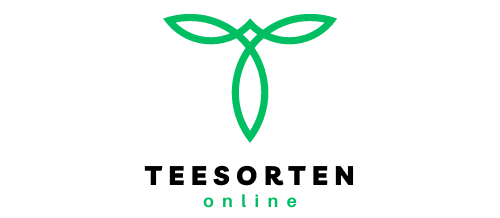How to Implement Effective Strategies for Reducing Salt Intake in Hypertensive Patients?

Hypertension, also known as high blood pressure, is a serious health condition that can lead to various cardiovascular diseases. One of the contributing factors is a high sodium or salt intake. Today, we will delve into the details of how to implement effective strategies to reduce salt consumption, particularly for individuals dealing with hypertension.
The Link Between Sodium Intake and Blood Pressure
Before diving into the strategies, it’s crucial to understand the correlation between sodium intake and blood pressure.
En parallèle : Can Personalized Music Playlists Enhance Memory Recall in Patients with Alzheimer’s Disease?
Research suggests that sodium plays a significant role in determining blood pressure levels. Sodium is a primary component of salt, which is commonly found in various foods. A high intake of sodium causes the body to retain water, which can result in an increase in blood pressure. According to various studies, a reduction in sodium intake can lead to significant decreases in blood pressure, particularly among individuals with hypertension.
A systematic review published on Google Scholar highlighted that hypertensive patients who reduced their sodium intake experienced a significant reduction in systolic and diastolic blood pressure. This indicates that managing sodium intake can be a practical intervention for individuals with high blood pressure.
A lire en complément : What Are the Best Practices for Incorporating Mindfulness Techniques in High-Pressure Work Environments?
Tips to Reduce Sodium Intake From Foods
Now that you understand the essential role sodium plays in your health, let’s explore practical tips to lessen your sodium intake from foods.
Firstly, consider opting for fresh, unprocessed foods whenever possible. Processed foods often contain high sodium levels as it is used as a preservative. By choosing fresh fruits, vegetables, and lean meats, you can significantly decrease your sodium intake.
Next, try to limit the use of table salt. Instead, experiment with other herbs and spices to provide flavor without the extra sodium.
Lastly, make a habit of reading food labels. Knowing the sodium content in packaged food can help you make healthier choices. Products labeled as "low sodium" or "no salt added" are generally better options.
Intervention Strategies to Reduce Salt Intake
Implementing intervention strategies can also significantly aid in reducing salt intake.
One effective intervention strategy is educational campaigns. These can inform the public about the health impacts of high sodium intake and the importance of a low-sodium diet.
Another strategy is to engage food manufacturers in reducing the sodium content in their products. This can be done through legislation, voluntary agreements, or establishing sodium reduction targets.
Also, programs that promote the DASH (Dietary Approaches to Stop Hypertension) diet can also be beneficial. The DASH diet emphasizes fruits, vegetables, and low-fat dairy products, and it limits foods high in saturated fats and sodium.
Using Digital Platforms for Salt Reduction Interventions
In this digital era, making use of technology can be a powerful tool in implementing salt reduction interventions.
Digital platforms like health apps can help monitor your sodium intake and provide healthier food alternatives. Websites and social media can also play a significant role in promoting awareness and education about the dangers of high salt intake.
Providers of hypertension-related information should also leverage popular platforms like Google Scholar to share studies and articles about the importance of salt reduction. This can help reach more audiences and effectively spread the word about this important health matter.
Monitoring and Evaluation of Salt Reduction Measures
Lastly, it is vital to monitor and evaluate the effectiveness of your salt reduction measures.
Regular health checks, including blood pressure and urine tests, can be used to monitor the impact of reduced sodium intake on hypertension. You may also track food intake through food diaries or apps to assess changes in dietary habits.
On a broader scale, surveillance systems can be established to monitor sodium content in food products and the population’s dietary sodium intake. These data can provide insights into the impact of different interventions and help inform future strategies.
In summary, reducing salt intake is a crucial aspect in managing hypertension. It can be achieved through practical tips, effective intervention strategies, use of digital platforms, and regular monitoring and evaluation. Remember, a healthy life begins with a balanced diet.
Developing a Sodium Reduction Intervention Group
Forming an intervention group that focuses on sodium reduction can prove to be a highly effective strategy. This group could consist of healthcare professionals, nutritionists, public health advocates, and hypertensive patients themselves.
The main aim of this group should be to provide education surrounding the importance of reducing salt intake, and to support patients in making healthy dietary choices. Providing this education and support can help patients understand the correlation between sodium consumption and blood pressure, encouraging them to make healthier choices and reduce their salt intake.
Training sessions can be carried out within the intervention group, focusing on how to read food labels and identify high sodium content. This can lead to better-informed food decisions. Moreover, the group could provide cooking demonstrations showing how to prepare meals using low-sodium ingredients and alternatives to salt.
Regular meetings should be held, during which members can share their experiences, challenges, and strategies. They can discuss what has worked for them and provide mutual support. Participants can also be encouraged to keep food diaries, tracking their daily sodium intake and making adjustments where necessary.
This intervention group can utilize platforms like Google Scholar and PubMed Google to keep updated on the latest research and meta-analysis studies related to sodium intake and hypertension. This can further educate the group and provide them with scientific evidence to support the importance of their efforts in reducing dietary salt.
Conclusion: Public Health Policy and Salt Reduction
Reducing salt intake to manage hypertension is not only a personal responsibility but also a public health issue. Governments and health organizations should play an active role in promoting healthy dietary habits and reducing the population’s salt consumption.
One potential public health strategy is implementing nutrition education programs in schools and community centers. These programs can raise awareness of the link between high sodium intake and cardiovascular diseases.
Legislation can also be used to encourage food manufacturers to reduce the sodium content in their products. Labeling requirements can ensure that consumers are well informed about the sodium content in packaged foods, enabling them to make healthier choices.
The findings of our systematic review, as well as other studies published on Google Scholar, emphasize that a comprehensive approach is needed. This includes individual efforts, the establishment of intervention groups, use of digital platforms, and public health policies.
In conclusion, managing hypertension through reducing salt intake is an attainable goal. However, it requires effort from all stakeholders, including patients, healthcare providers, and public health organizations. With persistent efforts and the right strategies, we can control hypertension and reduce the impact of this public health issue.
